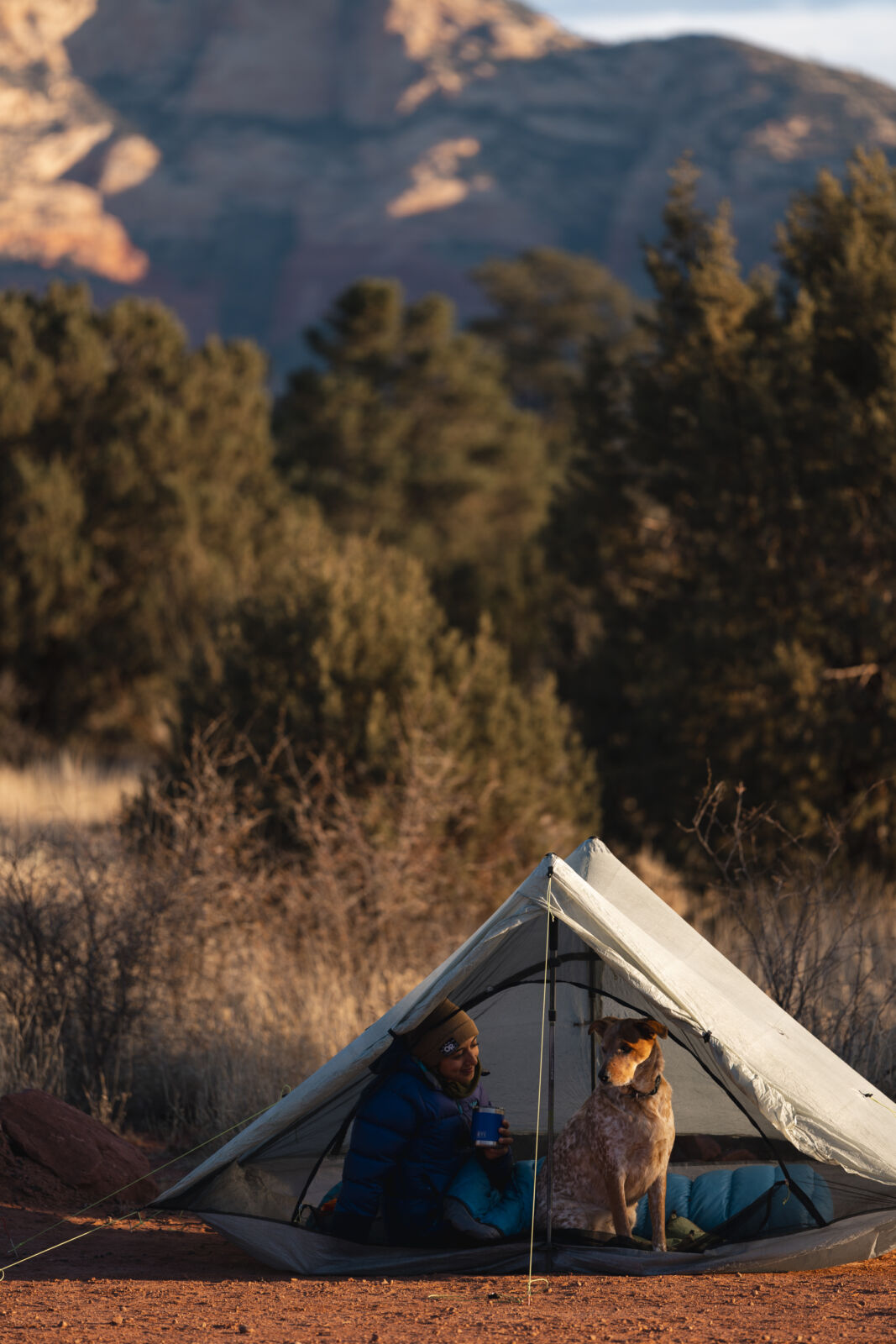On the Red Rocks Ranger District of the Coconino National Forest, the West Sedona Recreation Area was experiencing an all-too-common issue of being “loved to death.” Sedona is best known for its surreal landscape. It is a desert paradise filled with dreamlike rock formations, monoliths, cliffs, and canyons. Over the past few years, there has been an increase in camping across the country, including in the greater Sedona area. The area saw a jump in visitors, fueled partly by a rising population in the state and partly by the country’s renewed enthusiasm for the outdoors.

Visitors getting ready for a day of recreating.
Once word got out about the excellent spot, a slew of challenges began to crop up. The landscape quickly began to show signs of overuse. Adjacent landowners and forest managers were contending with an influx of irresponsible — and sometimes illegal — camping, litter, defecation issues, overcrowding, and natural resource damage.

Newly designated campsites.

A new strategy was needed to safeguard the area while still allowing people to camp overnight in its natural beauty. NFF, alongside Bronco Wild Fund, Pink Adventure Tours, as well as the Forest Service’s National Partnership Office and the Coconino National Forest, saw the opportunity to collaborate and improve the area based on a shared interest in ensuring public lands remain accessible to the public.
Moving to a New Management Strategy
Historically, dispersed camping west of Sedona meant being in nature with limited amenities and more solitude than you’d find in a traditional campground. However, with the increased interest in camping in the area, it was time to transition from being a conventional dispersed camping area to a designated dispersed camping location. With eight designated areas for dispersed camping that accommodate up to 200 campsites, people can continue to visit without conflict with one another or adjacent landowners and without damaging the fragile desert ecosystem they came to enjoy.

Newly designated campsites.

We installed four kiosks with maps, camping regulations, Leave No Trace ethics information, phone numbers, and more. The new designated dispersed approach will be monitored, and depending on results, future phases of work may include additional camping infrastructure and space for camp hosts, whose presence reminds people to follow the ethics of outdoor recreation, like proper trash removal.

Kiosks at the entrances and exits of the recreation area have maps and camping guidelines to educate visitors.
Signs indicating open and closed areas were also erected. Illegal campsites are being rehabilitated and blocked from further use with natural features like rocks to maintain the natural appeal of the area.

Signs at each of the campsites show visitors the proper locations of where to camp.
Through the important contributions of our partners like Bronco Wild Fund and our close coordination with the National Forest, we were able to protect the area from further damage through a more proactive management strategy.
All photos by Q. Martin.
--------
We hope you agree that getting outdoors with family, friends, or solo is a huge benefit of healthy and welcoming National Forests. Our work on campgrounds, trails, docks, overlooks, signs, and more ensures millions can enjoy the great outdoors each year. But it requires generosity from people like you to keep our work going. Your unrestricted gift allows us to direct funds to the greatest need. Please consider giving today. Thank you!

